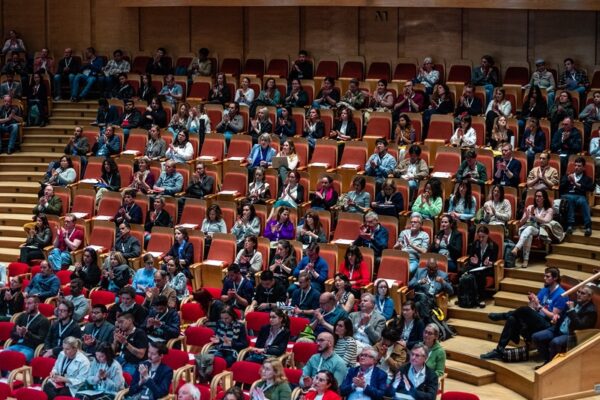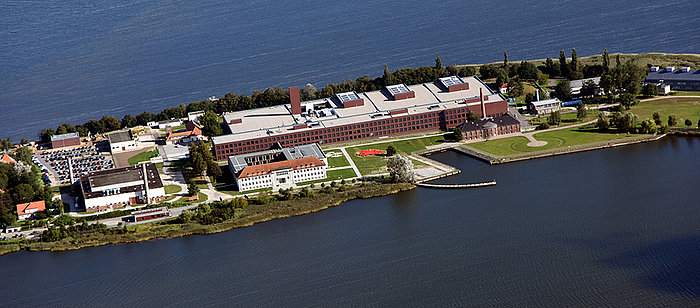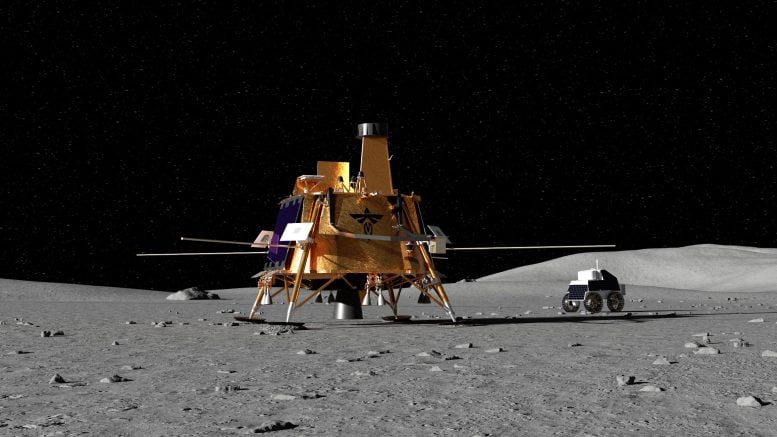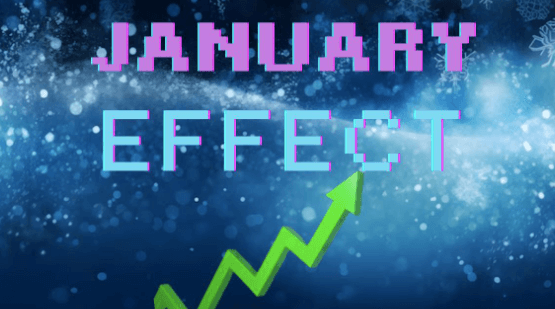by Jonathan Latham, PhD
Anyone sincerely seeking to avoid a repeat of the COVID19 pandemic is faced with two mysteries. Both of them need urgent answers. One mystery is the obvious one: Where did SARS-CoV-2 come from? The second mystery is this: Why, if they are as confident as they say they are that the pandemic began with a zoonosis, are so many individuals, institutions, and countries so reluctant to properly investigate that origin? This second mystery, though so-far less considered, may turn out to be much more significant than the origin itself.
The origin, if it was a lab leak, might just have been a freak machinery malfunction or an error by one single person. It may even be a case of ‘to understand everything is to excuse everything’. But the same cannot be said if experiments that are simple, obvious, inexpensive, and potentially decisive, are left undone. Experiments left undone signify a system-level problem. And a system-level problem is necessarily one that is widespread, that is ongoing, and that may worsen.
At the very top of the undone experiment list sits the raccoon dog infection question. Today, raccoon dogs are the leading candidate for the intermediate host–the wild or farmed animal species that might have brought COVID19 to Wuhan. Yet, only one publication has ever tested raccoon dogs for their ability to acquire and transmit SARS-CoV-2 (Freuling et al., 2020). That short paper, really a preliminary experiment, tested just nine animals and not all of them became sick. It also used the wrong strain. The Freuling animals were not tested with the origin strain of the virus but with the much more infectious and transmissible 614G strain. Thus it is more than possible that raccoon dogs cannot even be infected by the origin strain.
This glaring data gap embodies a sharp contradiction. Billions have been spent assessing global viral emergence risks. Billions more are set to be allocated to pandemic prediction. Yet, apparently no one in the world of infectious disease much wants to know how this actual pandemic started? It’s a point worth sharing with those who say we may never know where SARS-CoV-2 came from.
So much rests on this and similar questions that we need assurance that there are not good explanations. As a virologist with a longstanding focus on the origin question, I have this and other basic scientific questions to ask of the virologists who support the market origin theory; but the only practical way to have those questions answered (since they don’t respond to emails and block people on twitter) is to go to the same conferences they do. I have therefore keenly been awaiting the resumption of large-scale in-person virology conferences.
So, in early 2023, I formulated a plan to attend three major virology conferences scheduled for Europe this April and May. One goal was to hear the latest research findings, a second was to share our own theory of the origin of COVID19 and also of Ebola 2014, both of which we suspect were lab leaks, the third was to assess the state of the much-discussed ‘scientific consensus’. It would be a grand tour of the COVID origin frontline.
The plan was, first, to attend the Pathogens Project meeting, a 1.5 day conference (≈100 attendees, April 19-20) in Geneva, Switzerland and then the European Congress of Virology (ECV2023), in Gdansk, Poland (≈1,000 attendees, May 3-8th), a general virology conference. The culmination would be NIDO2023 in Montreux, Switzerland (≈700 attendees, May14th-18th). NIDO stands for the class of viruses known as the Nidoviridales, which include the coronaviruses; but, in practice, NIDO was always going to be a conference mostly about SARS-CoV-2 (COVID19). This latter meeting promised presentations by, among others, Shi Zheng-Li, whose Wuhan lab is the prime leak suspect, and by her collaborator Ralph Baric of North Carolina, USA, who is considered Shi’s mentor and is the Godfather of coronavirus manipulation. NIDO2023, in fact, would host a virtual compendium of the scientific leaders most often identified with stifling COVID origin questions and whose views have dominated the mainstream media during the pandemic–researchers like Eddie Holmes, Michael Worobey, Christian Drosten, Marion Koopmans, Susan Weiss, Joel Wertheim, Stuart Neil, Angela Rasmussen, and Bob Garry. On Twitter these researchers are often called Zoonati; I call them Huanan Market Fundamentalists.

From past experience I know that conferences on controversial topics can be intense. They are microcosms, distillations of the wider world where everyone with a strong interest either wants to be present or needs to be present. Such conferences have also acquainted me with the dark arts of conference management. I have learned how, if I want to ask awkward questions, I may have to move around the auditorium and rearrange my appearance. But nothing in that experience prepared me for NIDO2023–its organisers stole my papers, spied on me, and censored me. But this scientific maltreatment had one upside–it exposed a previously unsuspected nexus of scientists who are fixing key facts of COVID science to preserve the zoonotic hypothesis from disintegration.
The Pathogens Project: Lipsitch on a pig?
No matter how SARS-CoV-2 arose, virology has a long and troubling history of risky sample collecting, contamination incidents, research accidents, and lab escapes. At least once, in the case of H1N1 flu, the consequence was a global pandemic (Nakajima et al., 1978).
The Pathogens Project is a new group financially sponsored by the long-established non-profit organization Bulletin of the Atomic Scientists. With the stated purpose of “Creating the framework for tomorrow’s pathogen research” and members who include researchers like Jesse Bloom, Alina Chan and David Relman who have made brave and important contributions during the COVID origin controversy, many hope the Project will bring some clarity and openness to a branch of research characterised by some as ‘Wild West’.
Holding a conference on a subject like risky virus research and hoping to make it a springboard for changing scientific and institutional cultures is surely a challenging task. Especially when, as with viral pathogens, that research is deeply entwined with nationalist sensitivities and the military. I have attended or helped organise events similarly critical of entrenched establishments and they suffer badly from what are inherent asymmetries: representatives from the establishment (whether academics, scientists, or bureaucrats) have money, influence and media access. Their critics do not. Lacking effective discussion platforms, these critics are keen to show up, if they can afford to. Establishment figures, by contrast, have little need to be there and also rarely wish to explain their motives or defend their actions in public. For them, a public facing conference is all risk and no reward and the stakes are higher the more informed are the critics present.
For these reasons, one of two very different fates typically befalls such conferences and there is little middle ground. Either the strongest critics come and the establishment stays away or only the established scientists come, resulting in a token ‘discussion’ or a sham ‘debate’. In the latter case, lack of substance is compensated for by a fancy setting and a posh dinner where the wine flows. In contrast, when the establishment stays away the event gets held in a dingy school hall, often in the middle of nowhere. Which of these two occurs depends on the commitment and nous of the organisers. Even those who are committed to reform may wishfully believe that a diplomatic and restrained approach on their part and from the attendees will elicit a latent spirit of remorse and reform from the establishment.
In the case of the Pathogens Project the money must have flowed, otherwise we would not have been at the Hotel President in Geneva and gratis. It is true that some important and critical statements were made. For example, Marc Lipsitch said that some experiments that were done in the past should not have been and that viral prospecting needed to be carefully examined, while Rocco Casagrande asserted that basic data was lacking on best biosafety practices. Other contributions were useful or unintentionally revealing. The challenges of BSL-4 labs in India and the laboratory auditing limitations that exist there were discussed. But we also heard from a journalist who defended not dropping a scientific source who lied repeatedly “Well he is still a world expert” while Prof. Volker Thiel of Berne University (Switzerland) thought that failing to follow biosafety rules was only a problem in some countries. (Anyone who wants to hear a different perspective from his might read Pandoras’ Gamble: Lab Leaks, Pandemics, and a World at Risk, the new book by Alison Young.)
The critics were mainly quiet or absent, however. To participants who work at the WHO, in academia, or at Fort Detrick, these discussions may have felt bracing, but to me, a relative outsider, they seemed stilted, superficial, and sometimes were off-point entirely. The most important biosafety issues, and the toughest to discuss, concern the mind-set in virus research, its culture– these are problems that cannot be reduced to technical capability. To prevent lab leaks what is needed are not only regulations and inspections but transparency and accountability systems intended to create a responsible culture and this management aspect seems to be recognised much better by the group Biosafety Now!. For example, if an absolute publishing requirement for research on high-risk pathogens was for experimental details to be logged in real time on a global open-access database that allowed the tracking back of spills, that requirement would be a massive incentive for careful work. Yet, transparency and accountability were barely raised. A greater concern seemed to be to pour oil on troubled waters. Thus when Volker Thiel made his remark I challenged him to elaborate, but he couldn’t, or wouldn’t, say which countries he meant, nor how he could know what he claimed. Such unproductive thinking minimises the problems and impedes reform.
There is a further question, however. According to its website, some of the funders of the Pathogens Project are anonymous donors. How, I wondered, will non-Western leaders view a global initiative to regulate and maybe even inspect their laboratories that is funded by dark money? In conversation at the meeting with the editor of The Bulletin’s magazine, John Mecklin, I raised the subject of these secret donors. He didn’t consider this a valid concern; he didn’t know who the funders were and he noted that the Bulletin (the magazine part) has a wall separating donors from other activities.
It was a significant surprise, therefore, when, in her closing remarks, Pathogens Project Co-Director Filippa Lentzos referred to audience member and panelist Trevor Smith as a donor, since neither he nor his employer are listed among the funders. Trevor Smith works on WMDs for Canada’s Global Affairs Department. Why Canada would fund the Pathogens Project but wish to remain anonymous is, for now, a mystery.
Regardless, any anonymous funding leaves the Pathogens Project in no position to advocate openness and transparency in research on dangerous pathogens.
The European Congress of Virology and the raccoon dog question
My chief purposes in Gdansk, for ECV2023, were significantly different. I still wanted to distribute paper copies of our Mojiang Miner Passage theory of the origin of COVID-19 and our research on the origin of the Ebola outbreak of 2014. But I also had plenty of questions. The one I was most determined to ask was about the market origin theory and whether raccoon dogs could really be the missing intermediate host.
I got to ask it on the second last day at the end of the presentation by Martin Beer, a Professor at the Friedrich-Loeffler Institute in Germany. Prof. Beer supervises high security (BSL-4) virus research on an ‘island’ in the Baltic sea where different isolates and mutants of SARS-CoV-2 are tested for their infectiousness against small and large mammals.

In the first year of the pandemic Beer’s lab tested the original strain of SARS-CoV-2 for its ability to infect ferrets. They also tested the first major mutant strain of SARS-CoV-2, called 614G. This mutant strain has an amino acid change G (glycine) instead of a D (aspartic acid) at position 614 in its spike protein. 614G mutants have much higher human transmissibility and this mutation ultimately displaced all previous forms of the virus. In ferrets, Beer’s group found that both 614D (the original strain) and 614G could infect ferrets, giving a non-lethal illness. However, in ferret–to–ferret transmission experiments a key difference was observed: strains with 614D did not transmit to contact animals whereas 614G strains did transmit (Zhou et al., 2021). Other researchers working on a variety of non-human animals have made similar observations, that, as in humans, 614D strains are moderately transmissible while 614G strains are much more so (Peacock et al., 2021, Hou et al., 202). The weak ferret-to-ferret transmissibility of origin strains effectively rules ferrets out as putative intermediate hosts from among the list of animals sold at the Wuhan Seafood Market (Xiao et al., 2021; J. Zhou et al., 2022). But what these results mostly show is that, from the perspective of settling origin questions, it is critical to use the original (614D) strain.
Raccoon dogs are now the candidate most often mentioned as a putative intermediate host (Worobey et al., 2022). Prof Beer’s is the only group to have tested them for SARS-CoV-2 infection or transmissibility. However, they only reported results for the 614G strain which, in a very small experiment, did not infect raccoon dogs particularly well. Six of 9 animals became infected under conditions that were highly favourable (high infection doses of virus, indoors) for both infection and transmission (Freuling et al. 2020). Thus, neither Beer nor anyone else has published the critical experiments. Can raccoon dogs transmit the original 614D strain from Wuhan? Can they even be infected by it? We do not know. Furthermore, there have been no (zero) reports of farmed raccoon dogs catching SARS-CoV-2. Failure to test the origin strain on raccoon dogs is thus a remarkable oversight given the very reasonable likelihood that the origin strain is incapable of either infection or transmission.
My question for Prof. Beer was therefore simple. I asked why his group had never tested the 614D strain in raccoon dogs? This experiment, I pointedly noted, was a critical test the raccoon dog theory.
His answer was not “thanks, good idea, we’ll jump to it“. He stumbled a bit and then replied, and I paraphrase slightly:
He ” didnt know whether 614D or 614G came first.”
It was an astonishing reply on many levels. First, even if one did not know which came first, one would still do the test since they might give the same results. Second, no one in the scientific literature has ever suggested that 614D evolved from 614G, and for good reason:
1) 614D was detected first, in sequences from the very earliest COVID19 patients (e.g. Zhou et al., 2020).
2) 614D was entirely displaced by 614G as the pandemic progressed (Korber et al., 2020)
3) 614D is outcompeted by 614G in all tested animals and cell types, including human cells (Hou et al., Peacock et al., 202; Zhou et al., 2020).
4) 614D (and not 614G) is found in the closest wild ancestors of SARS-CoV-2 known, confirming 614D is the original strain.
Accordingly, a Nature paper from 2021 presents the order as being an unquestionable fact:
“As the pandemic has progressed, the SARS-CoV-2 variant that contains S(D614G) (hereafter SARS-CoV-2G614) has rapidly superseded the parental variant (with D in amino acid position 614 of S; hereafter SARS-CoV-2D614) in frequency to become globally dominant.”
(Zhou et al., 2021)
I selected this quote from many options because the last listed (i.e. most senior) author is: Martin Beer.
Are Prof. Beer and his colleagues protecting the market origin theory? Is that why they are refraining from doing the key test? He must know the stakes are high. The raccoon dog is probably the only remaining species known to be sold at the Huanan market that is also a plausible host of SARS-CoV-2 (Xiao et al., 2021). If they cannot be infected with the origin strain or cannot transmit it or do so only weakly, then raccoon dogs cannot be the intermediate host. This, in turn, would probably effectively sink the SARS-CoV-2 market origin hypothesis.
In reality, this question applies to the wider research community. Raccoon dogs have long been suggested as a candidate for the intermediate host species. Many other species have been experimentally infected with SARS-CoV-2 and raccoon dogs present no special difficulties–they are farmed by the millions in China. Yet, to date, only 9 raccoon dogs have been tested, and with the wrong strain. The results of this tiny experiment are therefore inconclusive. Other researchers with equivalent facilities need to be asked the same big question I asked Prof. Beer.
Showdown at NIDO2023
From the outset it was evident that NIDO2023 was going to present a challenge on another level. On the first morning, I asked the conference organisers, as I always do out of courtesy, whether and where I could leave my printed materials for sharing with other attendees . Initially, the desk staff indicated a spot on the end of the reception desk, which was long. I took the articles out of their box but immediately when they saw the title of the first one the staffer backtracked, saying they needed to ask the conference organiser. I asked who that was, and learned it was Professor Volker Thiel.
Volker Thiel, though I didn’t know it then was the next most senior author, after Martin Beer, of the words quoted above, which are copied from their ferret transmission publication. Volker Thiel had also been at ECV2023, when I put my question to Martin Beer.
I was assured an answer would be forthcoming immediately and in person since he was “just outside”. However, Prof. Thiel never arrived before I had to leave for the opening talk in the main auditorium. When I returned I was told that Prof Thiel had refused permission. In all my experience of leaving materials, spanning probably 50 scientific conferences, this refusal was unprecedented. Nevertheless, in time for the next session, I did leave out copies at some of the many empty tables at the venue.
A Question for Dr Shi of the WIV
In the meantime I had a pressing task, which was to attend the talk by Shi Zheng-Li for whom I also had a Question. Dr Shi, we soon learned, would present via zoom and not in person; prevented by what the organisers, without elaboration, called “political reasons”. As Dr Shi finished her talk I immediately raised my hand. In truth, I did not want to. I expected that my question would expose her badly. I also knew that it would upset and anger many other people in the room and that no one there was going to like what I had to say. The question might even change the course of history. But I raised my hand anyway and a student with a microphone came over to me. She was about to hand the microphone to me when she was redirected by the two session chairs who were gesticulating forcefully from the stage to another questioner at the back of the hall. Apparently, (I was told later) there was also a voice from the audience telling the student: “Don’t give him the microphone”. When the answer from Shi Zheng-Li ended, I again raised my hand. A different student came over and was again about to pass the microphone to me when the same voice repeated, much more distinctly:
“Don’t give him the microphone”.
This voice could be heard quite widely in the auditorium, loud enough to clearly identify the speaker, 6 rows in front of me. The student saw them too and went to them for clarification. The net result was that I again didn’t get the microphone. When I raised my hand for a third time one of the two session chairs told the audience that he would “use his privilege” and the remaining time to ask two questions of his own. This session chair, I later identified as David Wentworth. He is a branch chief at US CDC in Atlanta, specialising in virus surveillance and interspecies transmission. Significantly, David Wentworth is, behind Martin Beer and Volker Thiel, the third senior author of the ferret transmission paper quoted above. In other words, the three of them collaborate on assessing potential animal hosts of SARS-CoV-2.
In the following sessions of the conference the students, who were fulfilling their traditional student role of handing out microphones, were stood down. Their replacements were conference staff and organisers. For the rest of the conference whoever had the microphone seemed determined not to let me ask any questions. This was sometimes hard for them to do. I sat towards the front and sometimes was the sole person in the auditorium with their hand up, but still they sometimes ‘couldn’t see’ me. The situation took comical turns whenever the audience tried to direct the microphone holders my way.
In the next session, a woman came and sat next to me in the main auditorium. We didn’t speak, but after a while I realised she wasn’t taking notes on the presentations but was instead peering at my computer screen. I was being spied on. After the session I saw the same woman talking with Prof. Thiel.
It might be wondered, in defence of the organisers, that perhaps my censoring at NIDO2023 was merited on other grounds. Maybe my questions at ECV2023 were wrongheaded or unscientific? However, I had a pleasant experience midway through NIDO2023. An older scientist saw me having tea on my own and he sat down and initiated a conversation. He was a coronavirologist and he too had been at ECV2023 the week before. There, he had noted my frequent questions to the speakers. Those questions, he said: “had lifted up the whole meeting”. He, at least, didn’t think they were inappropriate.
Daylight robbery
After each NIDO session I would leave the auditorium to see whether document piles I had left out in strategic spots needed replacing. Each time none were left. I guessed that the conference organisers, and not only delegates, were removing them. So I decided to leave one pile of each document at the top of the stairs between the main auditorium and the food and dining area where I could sit nearby and watch them. After about ten minutes two desk staff walked towards the documents, picked up both piles and headed downstairs towards the auditorium. I decided to follow them, hoping, initially, just to retrieve my documents. Figuring they might bin them I looked in the waste container at the foot of the stairs. There was no sign of the documents or the staff but when I looked up they were both coming towards me; evidently, they didn’t know they had been followed. They recognised me and instantly whirled around back into the main auditorium. I followed them inside, and saw they were already at the far side of the hall, staring in my direction. Shortcutting across the empty stage I moved towards them. The younger of the two disappeared behind the posters with my papers. I approached the older woman, who hadn’t moved and I said
“It’s great that your colleague loves science so much that she took all my papers”.
She half-smiled and I said
“But that is stealing. I would like them back”.
She looked very uncomfortable, perhaps because the Swiss are particularly disapproving of anyone who flouts the law. After a brief conversation in which I pointed out that their printing had cost over 1,000 Swiss Francs, she agreed they would return them at the end of the meeting. It was far from a satisfactory agreement but I decided not to pursue it immediately. I had what I wanted for now, which was proof that the conference organisers were taking my papers. Nevertheless, I continued to put papers out and they continued to remove them. At this stage the staff seemed to be on a permanent patrol of the conference spaces looking for me or my papers.
Censorship at NIDO2023: premeditated and coordinated
Besides being egregious acts of scientific censorship, the events at NIDO2023 have other important implications for understanding the origin of COVID-19. First, the efforts to prevent me from participating fully at NIDO2023 were elaborate and clearly coordinated and orchestrated by the organisers. This was not just an attempt by one or two bad apples, it was a conspiracy.
Second, preventing me from speaking was premeditated. For the two different session chairs (neither of whom I have met) to redirect the students, starting from the instant I first raised my hand at the conference, requires me to have been identified in advance and to have been picked out–in real time–from the large crowd as a person of interest.
Third, in scientific meetings, members of the audience never pick the questioners–that role belongs to the session chairs on the stage. The individual in the audience who usurped that prerogative was Florence Debarre. Debarre was not listed as an organiser of the meeting but she is a prominent advocate for the zoonotic origin of COVID19 on social media and a Huanan Market Fundamentalist. It was she who recently spotted and analysed previously unpublished Chinese market sequences on GISAID. Her intervention indicates that the censorship at the meeting was integrated with COVID origin censorship more generally.
Moreover, it is noteworthy that the two individuals most active in censoring me (Volker Thiel and David Wentworth) are both collaborators with Martin Beer and co-writers of the key ferret paper that showed the superior infectivity and transmissibility of 614G mutants over the origin strain in multiple non-human animals, including an animal species (ferrets) sold at the Huanan Market (Zhou P. et al., 2021).
Unlike a number of other participants at NIDO2023, Beer, Thiel, and Wentworth have not previously been identified as key defenders of the market hypothesis. But it should be noted that very few researchers across the world have access to the high-biosecurity facilities necessary to perform animal transmission studies with highly pathogenic viruses. Thus, as well as being crucial to validating and testing market origin theories, transmission studies are a scientific bottleneck. Given their behaviours at NIDO2023 it is not farfetched to suppose that their unusual transatlantic collaboration is part of a plan to control the animal host scientific literature.
Censorship and consensus
Censorship is often framed wrongly. The primary victim is not the author, it is the potential audience, whose access to information is denied. In this case, the individuals being denied information were highly expert virologists. If our writings are misguided and my questions ill-informed, the NIDO conference organisers gain nothing through censorship, they only risk their professional standing to achieve it. A key COVID origin question, therefore, is to ask what imperative this censorship might serve?
The surprising answer is that, across all of the three conferences, just one short talk (fifteen minutes by Joel Wertheim at NIDO2023) discussed head-on the topic of the origin of SARS-CoV-2. At ECV2023 at least, there was a whole session nominally dedicated to the origin of SARS-CoV-2. However, both speakers entirely dodged their charge. When these two presentations were over, an Italian woman researcher asked, in an impatient tone:
“So what is the origin of SARS-CoV-2?”
She got no answer because lunch was felt, by the Chair, to be more important.
Thus each of the conferences I attended managed, in their own ways, to avoid discussing the elephant that was often palpably present in the rooms. This, surprisingly, answers the question I posed at the beginning–What is the nature of the scientific consensus on COVID’s origin?
A consensus implies discussion and it implies knowledge. From questioning them, I found that few researchers at any of the three meetings I attended had more than a very superficial knowledge of the evidence base surrounding COVID’s contested origin. Only one researcher I queried had closely examined any of the arguments in any direction. The expert consensus, paradoxically, was therefore simple ignorance.
Thus the Huanan Market Fundamentalists who censored me did so because they understand two things that are not ordinarily known. One is that the expert ‘consensus’, being founded in ignorance, is a delicate thing, it can easily be disturbed by what is, to most virologists, new information. Second, the market fundamentalists are acutely aware, as perhaps only virologists can be, of the extreme weakness of the Huanan market origin hypothesis, which even a small amount of disinterested expert discussion would likely expose. Together, these two factors explain the urgency and flagrancy, sometimes bordering on desperation, of the censorship I experienced.
The question I wasn’t allowed to ask of Dr Shi
The question pertains to our hypothesis that SARS-CoV-2 evolved from being a bat virus into a human-adapted pathogen inside one of the six Yunnan men (the Mojiang miners) who all became infected with a mysterious COVID19-like illness in 2012 after shovelling bat guano.
Thus I had a simple clarifying question for Dr Shi:
“In the November 2020 addendum to your Nature paper (Zhou et al., 2020) you stated that, in 2012, your laboratory received a set of serum samples from four of the Mojiang miners. Did you receive any other samples, especially of kinds such as throat swabs or broncheolar lavage samples, that would have been more appropriate to assess these individuals who were suffering primarily from lung and respiratory symptoms?”
The backstory is that the WHO investigation accepted what they were told by Shi Zheng-Li, which is that the miners did not have a coronavirus infection. But, according to the subsequently published addendum, this negative finding relied entirely on analysis of blood samples. Meanwhile, much biological and other evidence contradicts this negative finding. That evidence includes: (1) that the lethal Mojiang mine incident fitted the expectations of a SARS-like virus from bats, and (2) very intensive bat coronavirus sampling occurred at the Mojiang mine after the outbreak, and (3) the bat coronaviruses found at the Mojiang mine were fast-tracked for analysis (Wang et al., 2014). So we are expected to believe that, despite the strong possibility of catching a novel and potentially pandemic coronavirus in flagrante, the investigation into the miners’ illness was halted on the basis of a small number of negative blood tests.
The alternative is that a comprehensive investigation of the miners was conducted but the results were withheld; and even now they are being withheld–even though a credible analysis of samples from that outbreak (positive or negative) would help to dispel lab leak suspicions. If the samples from the miners did not contain a SARS-CoV-2-like virus, why can we not see the data?
Once again, this issue in part devolves back to the broader virological community. Why do Western virologists seem to overwhelmingly accept the first of these possibilities, without question and without data?
Full circle
My tour began with the Pathogens Project and it ended at a conference run by Volker Thiel. At the outset, I had never heard of Volker Thiel, but events have come full circle. The Pathogens Project has just announced the final constitution of its 26-member Task Force to make pathogen research safer. One of its members is Volker Thiel.
Given that the conference he ran integrated its censorship of me with the Huanan Market fundamentalists, Volker Thiels’ inclusion is very disturbing. Whether Pathogens Project is aware of his associations and his views or is ignorant of them, it raises deep and uncomfortable questions for the whole Pathogens Project enterprise. Especially so when other scientist members of the Task Force include Ravindra Gupta, Clare Jolly, and Asha George, none of whom have a track record of commitment to biosafety concerns.
Setting a new direction for research on high risk pathogens is not for the faint of heart. What will the Pathogens Project offer that Biosafety Now! does not? Because the worst of all possible outcomes is for the Pathogens Project to offer tepid and ineffectual ‘solutions’ that displace truly effectual ones.
References
Freuling, C. M., Breithaupt, A., Müller, T., Sehl, J., Balkema-Buschmann, A., Rissmann, M., … & Mettenleiter, T. C. (2020). Susceptibility of raccoon dogs for experimental SARS-CoV-2 infection. Emerging infectious diseases, 26(12), 2982.
Korber, B., Fischer, W. M., Gnanakaran, S., Yoon, H., Theiler, J., Abfalterer, W., … & Montefiori, D. C. (2020). Tracking changes in SARS-CoV-2 spike: evidence that D614G increases infectivity of the COVID-19 virus. Cell, 182(4), 812-827.
Wang, N. (2014) Serological Cross-Reactivity Analysis of Coronavirus Based on Nucleocapsid Proteins. MSc Wuhan Inst. of Virology.
Worobey, M., Levy, J. I., Malpica Serrano, L., Crits-Christoph, A., Pekar, J. E., Goldstein, S. A., … & Andersen, K. G. (2022). The Huanan Seafood Wholesale Market in Wuhan was the early epicenter of the COVID-19 pandemic. Science, 377(6609), 951-959.
Xiao, X., Newman, C., Buesching, C. D., Macdonald, D. W., & Zhou, Z. M. (2021). Animal sales from Wuhan wet markets immediately prior to the COVID-19 pandemic. Scientific reports, 11(1), 1-7.
Zhou, J., Peacock, T. P., Brown, J. C., Goldhill, D. H., Elrefaey, A. M., Penrice-Randal, R., … & Barclay, W. S. (2022). Mutations that adapt SARS-CoV-2 to mink or ferret do not increase fitness in the human airway. Cell Reports, 38(6), 110344.
Zhou, P., Yang, X. L., Wang, X. G., Hu, B., Zhang, L., Zhang, W., … & Shi, Z. L. (2020). A pneumonia outbreak associated with a new coronavirus of probable bat origin. nature, 579(7798), 270-273.
If this article was useful to you please consider sharing it with your networks.










Leave a Comment